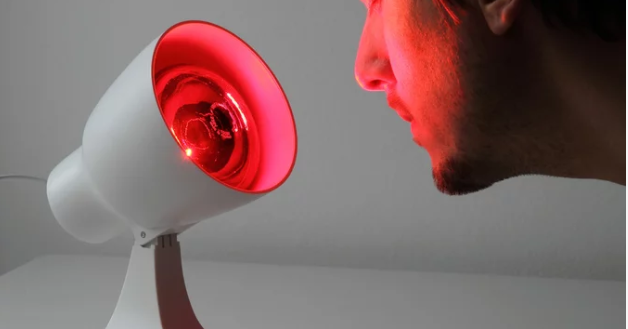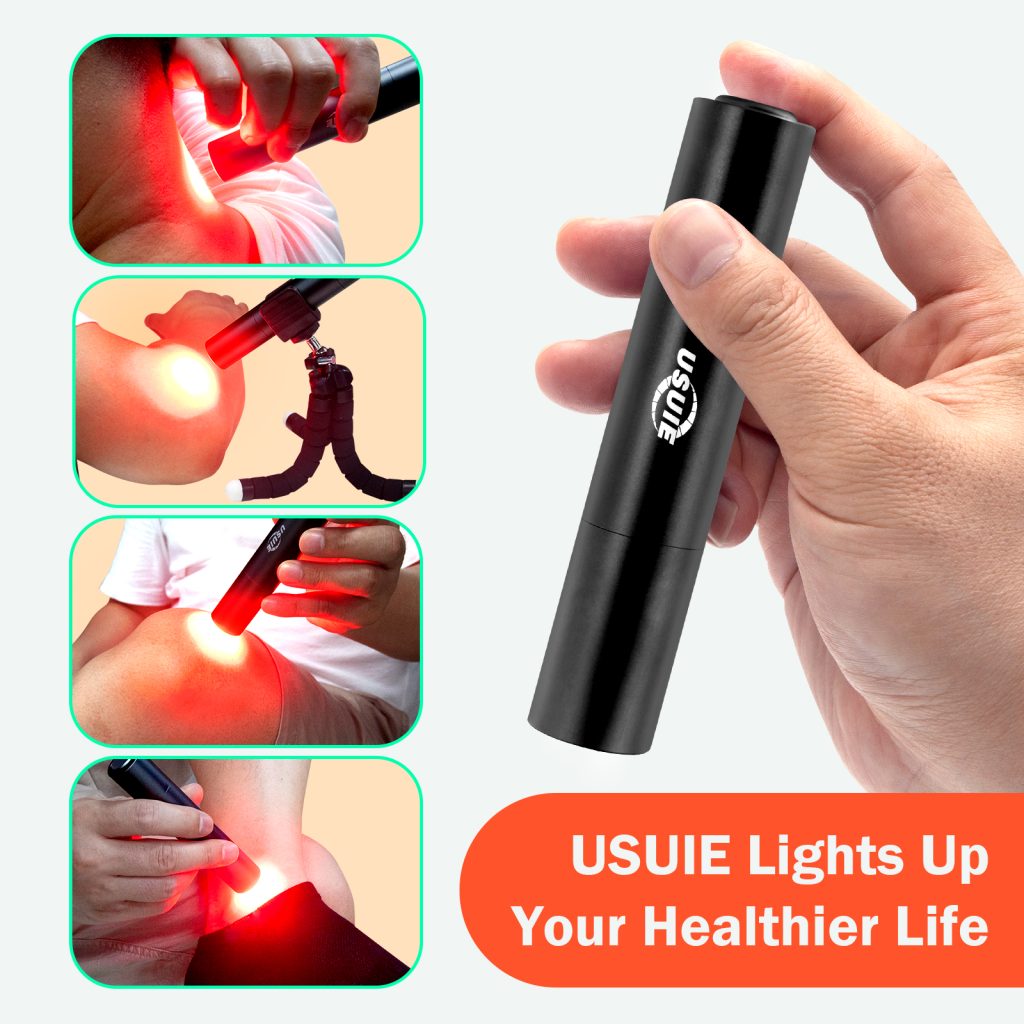Are you curious about the benefits of red light therapy but worried about overdoing it? You’re not alone. Red light therapy has gained popularity for its potential to improve skin health, reduce pain, and enhance athletic performance. However, like any other treatment, it’s essential to understand the importance of moderation.
Can you overdo red light therapy? The answer is yes. While this therapy is generally safe, excessive exposure can lead to potential adverse effects. Research on red light therapy dosage suggests that following instructions is crucial to reap the maximum benefits without adverse consequences.
This article will explore the possibility of overexposure, the potential adverse effects, and the importance of adhering to the recommended guidelines. So, let’s dive in and discover how to make the most out of red light therapy while ensuring your safety and well-being.
Possibility of Overexposure
Overexposure to red light therapy can adversely affect your skin and eyes. Prolonged exposure to red light can lead to skin damage, such as burns, rashes, and premature aging. Additionally, excessive exposure to red light can cause eye damage, including retinal damage and vision problems.
It’s important to use red light therapy in moderation and follow the recommended guidelines to avoid these potential risks.
1. Skin and Eye Damage
Excessive use of red light therapy may lead to potential harm to the skin and eyes. While red light therapy has numerous benefits, it’s essential to do it sparingly.
Prolonged exposure to red light can cause skin damage, such as burns, rashes, and dryness. It’s crucial to follow the recommended time and intensity guidelines provided by the manufacturer or a healthcare professional to avoid these issues.
Additionally, the eyes are susceptible to light, and prolonged exposure to red light can lead to eye damage. It includes conditions like eye strain, dry eyes, and potential retinal damage.
It’s essential to use red light therapy in moderation and consult with a professional if you have any concerns.
2. Heat-Related Issues
When using red light therapy, caution must be taken to avoid the potential risks of heat-related issues. While red light therapy is generally considered safe, prolonged exposure to excessive heat can lead to discomfort and even burns.
Following the manufacturer’s recommendations for session durations and monitoring your body’s response during treatment is essential. If you start to feel overheated or experience any unusual sensations, it’s essential to stop the treatment and cool down immediately.
Remember to stay hydrated before, during, and after your red light therapy sessions, as the heat can cause dehydration. You can ensure a safe and effective red light therapy experience by being mindful of the heat and taking necessary precautions.

Potential Negative Effects
If you overdo red light therapy, there are potential adverse effects you should be aware of.
One of these is skin sensitivity. Prolonged exposure to red light can make your skin more sensitive and prone to irritation.
Another adverse effect is that it can be counterproductive to your sleep. The bright red light can disrupt your natural sleep patterns.
Lastly, overexposure to red light can lead to hyperstimulation. It can cause feelings of restlessness and anxiety.
So, using red light therapy in moderation is essential to avoid these potential adverse effects.
1. Skin Sensitivity
While red light therapy can benefit various skin conditions, individuals with sensitive skin may want to be mindful of potential reactions. Red light therapy works by stimulating collagen production and promoting blood circulation, which can improve skin health and reduce signs of aging.
However, if you have sensitive skin, you may experience increased skin sensitivity after red light therapy sessions. It can manifest as redness, itchiness, or even a rash. It’s essential to listen to your skin and pay attention to any changes or discomfort.
If you notice any adverse reactions, reduce the frequency or duration of your red light therapy sessions. Consulting with a dermatologist can also provide valuable guidance in managing skin sensitivity and determining the appropriate action.
2. Counterproductive Effects on Sleep
If you’re using red light therapy for its skin benefits, it’s essential to be aware of its potential counterproductive effects on sleep. While red light therapy can help improve skin health and reduce inflammation, it emits a specific wavelength of light that can suppress the production of melatonin, the hormone that regulates sleep. It can make it harder to fall asleep at night and disrupt your circadian rhythm.
Overdoing red light therapy sessions, especially in the evening or close to bedtime, may exacerbate these effects and lead to sleep disturbances. So, it’s recommended to use red light therapy earlier in the day and limit the duration and intensity of the sessions.
By being mindful of these considerations, you can ensure that red light therapy provides its intended benefits without compromising sleep quality.
3. Hyperstimulation
It’s essential to be mindful of the duration and intensity of your red light therapy sessions. While red light therapy has numerous benefits, using it excessively can have counterproductive effects.
Hyperstimulation occurs when your body is exposed to too much red light, leading to overstimulation of your cells and tissues. It can result in increased inflammation, oxidative stress, and even damage to your skin.
To prevent this, start with shorter sessions and gradually increase the duration and intensity as your body adjusts. It’s recommended to follow the manufacturer’s guidelines for optimal usage. Also, pay attention to any discomfort or irritation during and after the sessions.
Remember, moderation ensures that red light therapy remains beneficial and safe.
Research on Red Light Therapy Dosage
Research on red light therapy dosage shows that finding the right balance is crucial to avoid overdoing it. While red light therapy has been shown to have numerous benefits, it’s essential to use it in moderation.
Excessive exposure to red light therapy can be counterproductive and may lead to adverse effects. One study on rats found that high doses of red light therapy caused oxidative stress and increased inflammation in the body.
Another study on humans found that prolonged exposure to red light therapy can lead to skin damage and burns. Therefore, following the guidelines and consulting with a healthcare professional to determine the appropriate dosage for your specific needs is recommended.
Remember, too much of a good thing can sometimes be harmful.
Importance of Following Instructions
When using red light therapy, it’s crucial to follow the instructions in the user manual and adhere to the manufacturer’s recommendations.
These guidelines will help ensure that you’re using the therapy device correctly and at the appropriate intensity.
Overusing red light therapy can have adverse effects, so it’s essential to be aware of the signs of overuse and gradually increase the intensity of the therapy to avoid any potential harm.
1. User Manuals and Manufacturer Recommendations
Ensure you follow the user manual and adhere to the manufacturer’s recommendations to avoid excessive use of red light therapy. The user manual provides essential information about the duration and frequency of red light therapy sessions. It also explains any precautions or contraindications that you should be aware of.
The manufacturer’s recommendations are based on extensive research and testing, ensuring the optimal and safe usage of the therapy. By following these instructions, you can maximize the benefits of red light therapy while minimizing the risk of overdoing it.
Overusing red light therapy may lead to adverse effects such as skin irritation or discomfort. So, take the time to read the user manual and follow the manufacturer’s recommendations to get the most out of your red light therapy experience.
2. Signs of Overuse
Excessive use of red light may result in visible signs of skin irritation or discomfort. It’s essential to pay attention to your skin’s reaction during red light therapy sessions. If you notice any redness, itching, or a burning sensation, it may be a sign that you’re overusing the therapy.
Additionally, if your skin becomes dry or begins to peel, it could indicate that you need to reduce the frequency or duration of your sessions. Overdoing red light therapy can also lead to headaches or eyestrain, so take breaks and give your body time to rest.
Remember, moderation is key in red light therapy to ensure you receive all its benefits without any adverse side effects.
3. The Importance of Gradual Intensity
Building up the intensity of your sessions can help maximize the effectiveness and ensure a comfortable experience. When it comes to red light therapy, starting with a lower intensity and slowly increasing it over time is essential.
It allows your body to adapt to the treatment and reduces the risk of overdoing it. Overexposure to red light can lead to adverse effects such as skin irritation, dryness, or even burns. By gradually increasing the intensity, you give your skin time to adjust and minimize the chances of any adverse reactions.
It’s also important to listen to your body and notice any signs of discomfort. If you experience any pain or irritation during your sessions, it’s best to reduce the intensity or take a break. Remember, moderation is vital for a safe and effective red light therapy experience.

Conclusion
In conclusion, it’s essential to be cautious and follow instructions when using red light therapy. While the therapy has many potential benefits, overexposure can lead to adverse effects. Research on dosage suggests that moderation is vital to achieving the desired results without any harm.
By understanding the potential risks and adhering to recommended guidelines, you can safely and effectively incorporate red light therapy into your wellness routine. So remember, always prioritize your health and well-being when using any form of treatment.
